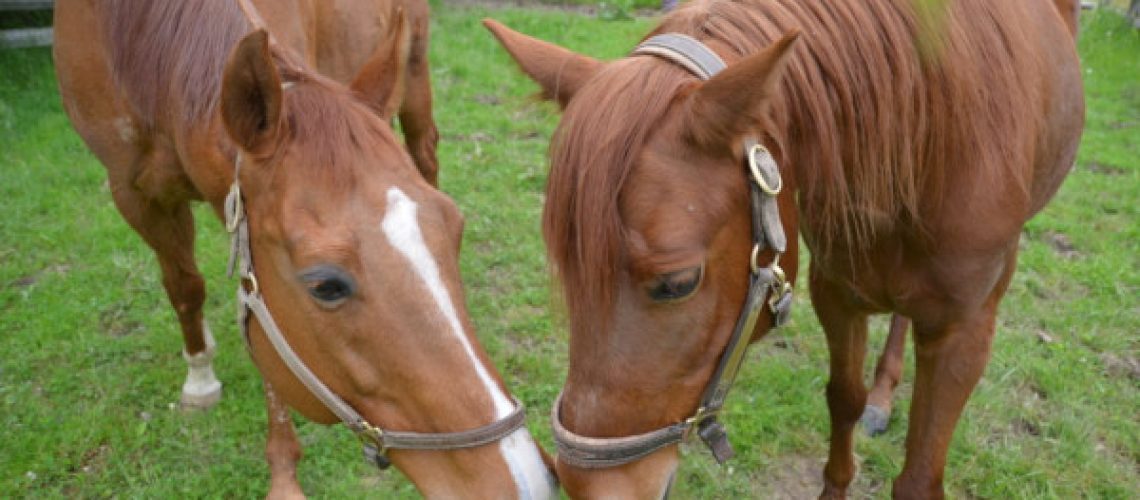

Chris Goodall, LISW-S
Chris has 20 years of experience as a social worker, 15 years of which have included providing Equine Assisted Services to clients with a range of needs including addiction and serious mental illness. She has trained in a number of evidence-based psychotherapies that can be applied in the office or the arena and is a Certified Daring Way™ Facilitator. She is currently a member of the Professional Association of Therapeutic Horsemanship International (PATH Intl) and part of the Human Equine Relational Development (HERD) Institute.
Stories from our horses
Over the next several months the blog will focus on stories that help you, the reader, relate to how the horses help us to learn to listen to their bodies and to our own. Through these stories we hope you will have a better understanding of the power of the work that happens at the farm and why it is so essential that we learn to drop in, listen, and connect.
Listening
Last month, one of our staff members made a negative comment about a horse’s behavior during a client session. The very next day, I heard about another horse in the barn that had been put back part way through a session because they weren’t cooperating and pinning their ears. Being curious, I went and spent time with both of these horses. The first horse I worked with by myself, and I found him to be rather pleasant in the cross ties. He didn’t display any of the negative behaviors that were reported only a few days prior. The difference in the horse’s mannerisms led me to become interested in what had been happening during that session: what energy was the client bringing to the session? What mood was the staff member in? Was this horse “being bad” or was he simply responding to the energy in the room?
Next, I ran a client session with the second horse above — a horse that has been struggling with some back and stomach issues and was recently treated with new medications and complementary practices. When I pulled him out of his stall, he stopped about three feet short of the cross ties and nervously eyed the client. Picking up on his mannerisms, the client suggested that “maybe he doesn’t want to work today.”
I coaxed him into the crossties and handed the client a grooming bucket. Upon walking up to the horse with a brush, he pinned his ears and backed away, swishing his tail.
“I really don’t think he wants to work today.”
Turning my attention away from the horse, I asked the client how they were feeling.
“I have a headache and I’m stressed. Can we try a different horse?” I agreed to put this horse away and try a different horse, but I remained curious about his strong negative response. The second horse I brought out has the reputation for being a friendly, low energy horse who loves to be groomed. However, instead of her usually friendly sniff for clients, she twitched her ears backwards and sidestepped away. Noticing the client’s response to the horse, I asked what she thought was going on. the client suggested that “she doesn’t want to be ridden either.” This was supposed to be a first mounted lesson for this client who has previously done groundwork. She had worked with the first horse in prior sessions but this second horse was new to her.
“Are you sure you want to ride today?”
“No, not really. My head hurts and I just don’t know.”
“We don’t have to ride today.”
The client took a deep breath. “I think I would like that.” The horse exhaled, perked her ears forward, and began to chew – an equine behavior that indicates a release of tension.
“I think I would like that.”
The session finished as a relaxed and productive ground session. The client learned to be aware of her needs and that it is okay to listen to your body.
After the client left, I went over to the first horse we worked with and put his halter back on. In contrast to his behavior only an hour earlier, he was agreeable and walked right up to the crossties. I groomed him without complaint, tacked him and had a very relaxed ride, indicating to me that his personal pain issues were not bothering him that day.
Horses talk to us with their bodies. Through their behaviors, they are able to communicate things such as discomfort and stress, as well as enjoyment. When we are working with a horse that comes out of their stall with a different presentation than normal, or when we notice these “bad behaviors,” remember that this is the horse’s way of communicating with us, and it is our job to become curious and decide if what they are telling us is about us, the client, or their own experience.

